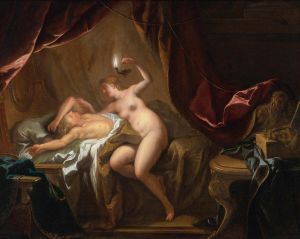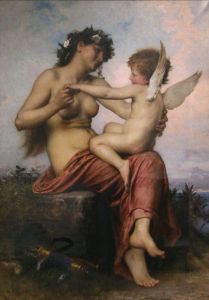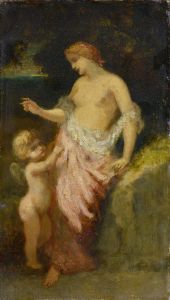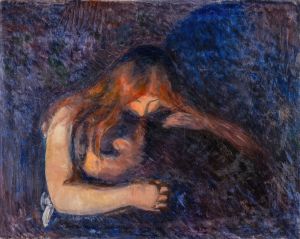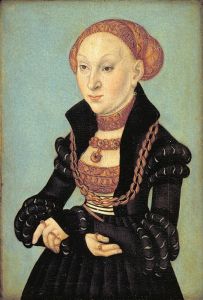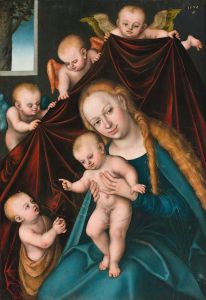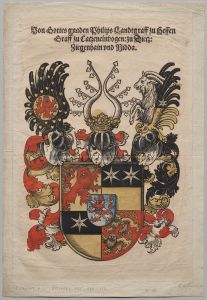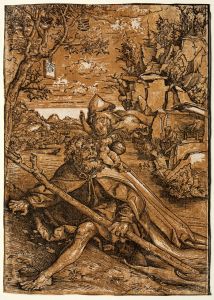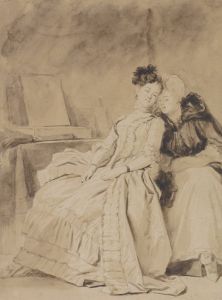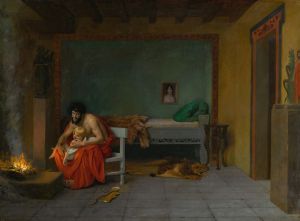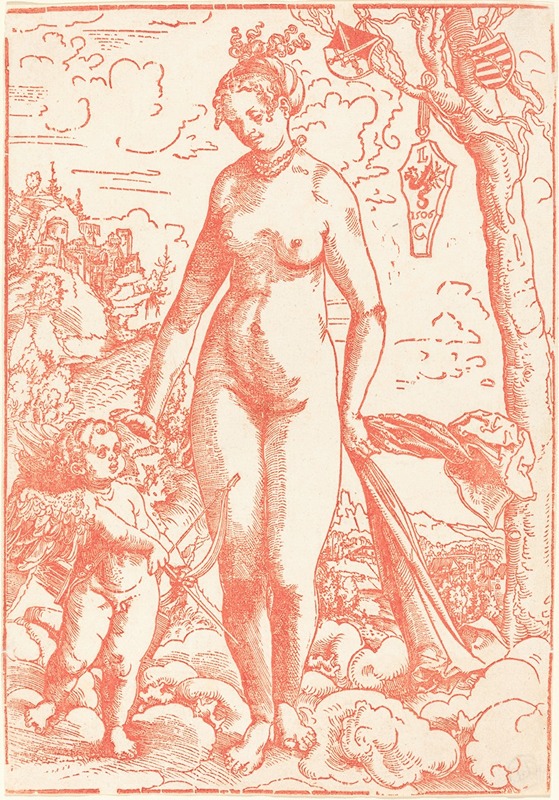
Venus and Cupid
A hand-painted replica of Lucas Cranach the Elder’s masterpiece Venus and Cupid, meticulously crafted by professional artists to capture the true essence of the original. Each piece is created with museum-quality canvas and rare mineral pigments, carefully painted by experienced artists with delicate brushstrokes and rich, layered colors to perfectly recreate the texture of the original artwork. Unlike machine-printed reproductions, this hand-painted version brings the painting to life, infused with the artist’s emotions and skill in every stroke. Whether for personal collection or home decoration, it instantly elevates the artistic atmosphere of any space.
Lucas Cranach the Elder, a prominent German Renaissance painter, created the artwork "Venus and Cupid" around 1529. This painting is one of several renditions Cranach produced on the theme of Venus, the Roman goddess of love, and her son Cupid, the god of desire. Cranach was known for his distinctive style, characterized by elongated figures, attention to detail, and a blend of Gothic and Renaissance elements, which is evident in this work.
"Venus and Cupid" depicts the goddess Venus standing nude, a common portrayal in Renaissance art that emphasizes beauty and classical ideals. She is accompanied by Cupid, who is often shown as a mischievous child with wings. In this painting, Cupid is depicted holding a honeycomb, which is a symbolic element. The honeycomb can represent the sweetness of love, but the bees surrounding it also suggest the potential pain or consequences that can accompany desire. This duality is a recurring theme in Cranach's work, reflecting the complex nature of love and temptation.
The background of the painting is typically a lush, natural setting, which was a favored backdrop for Cranach's mythological scenes. This setting not only enhances the beauty of the figures but also situates them in an idealized, almost otherworldly realm. The use of landscape in Cranach's work often serves to create a harmonious balance between the figures and their environment, a technique that was highly appreciated during the Renaissance.
Cranach's "Venus and Cupid" is notable for its sensuality and the delicate rendering of the human form. The artist's ability to convey texture, such as the softness of skin and the sheen of hair, demonstrates his mastery of oil painting techniques. The painting's composition, with Venus as the central figure, draws the viewer's eye and emphasizes her importance in the scene.
Lucas Cranach the Elder was a court painter for the Electors of Saxony, and his works often reflect the tastes and interests of his patrons. The depiction of mythological subjects like Venus and Cupid was popular among the nobility, who were interested in classical antiquity and its themes. Cranach's ability to infuse these subjects with both elegance and moral complexity made his paintings highly sought after.
"Venus and Cupid" is housed in various collections, with different versions residing in museums such as the National Gallery in London and the Kunsthistorisches Museum in Vienna. Each version offers slight variations, showcasing Cranach's exploration of the theme and his adaptability as an artist. These paintings continue to be studied for their artistic merit and their insight into the cultural and social dynamics of the Renaissance period.
Cranach's work, including "Venus and Cupid," remains significant for its contribution to the Northern Renaissance and its influence on subsequent generations of artists. His ability to blend classical themes with a distinct Northern European style helped bridge the gap between different artistic traditions and left a lasting legacy in the history of art.





